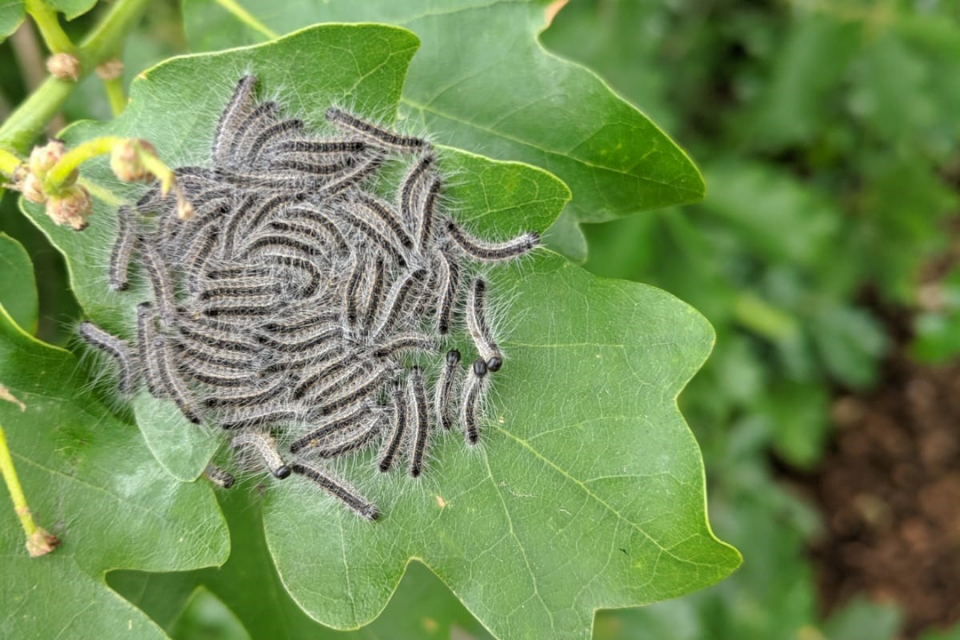Zones Expand to Manage Oak Processionary Moth
Changes to the operational boundaries to manage Oak Processionary Moth (OPM) in London and Southern England came into effect on 8 March.
The changes have been made by the Forestry Commission in response to findings of OPM in 2021/2022. This map shows the new Established Area, Buffer Zone and Pest Free Areas.
The Established Area has been extended north and north-eastwards into south Buckinghamshire, Hertfordshire and Essex. The Buffer Zone has been expanded westwards towards the New Forest and parts of Wiltshire, northwards into Bedfordshire and Cambridgeshire, and north-eastwards further into Essex.
A list of local authorities and wards that fall into the buffer zone and established area is also available.
About OPM

Above: OPM caterpillars. Credit Forestry Commission
The OPM season starts in March. Caterpillars are only about 2mm long when they emerge, and tend to remain high in the trees until they are older and larger. When they reach 1cm long they develop the irritating hairs. They are fully grown at 2cm long.
They usually move nose-to-tail in a procession, hence their name.
Nests are usually found in early summer, in the trunks and branches of oak trees.
The hairs on OPM caterpillars and nests affect the health of people and animals. They can cause itchy rashes, eye and throat irritations and occasionally breathing difficulties in both people and animals.
Sightings
Any sightings should be reported to the Forestry Commission via the Tree Alert online form. Alternatively, people can email opm@forestrycommission.gov.uk or call 0300 067 4442.
The OPM Hub contains tools to help develop an OPM management plan with further information on managing OPM here.
This area is officially designated free from the pest and covers most of the country. In this area government funds an extensive programme of surveillance to monitor for OPM. If OPM is found in the pest free area, government will take robust actions to eradicate it.
In this area there is an annual OPM programme of surveillance and control, led by Forestry Commission. This programme involves detecting the pest and treating infested oak trees (and those trees in close proximity). If you own an infested oak tree in the buffer zone, the Forestry Commission may issue you with a Statutory Plant Health Notice (SPHN) asking you to take action. In most cases support will be available from the Forestry Commission for treatment of trees within this zone.
This is the area where OPM is established in the South East of England. In this area landowners are responsible for the management of OPM on their land, however guidance is available on the OPM hub. If you own an infested oak tree in this area it is recommended you find a professional on the Arboricultural Association website to treat and remove any hazardous nest material if required. You should still check for OPM every year.

